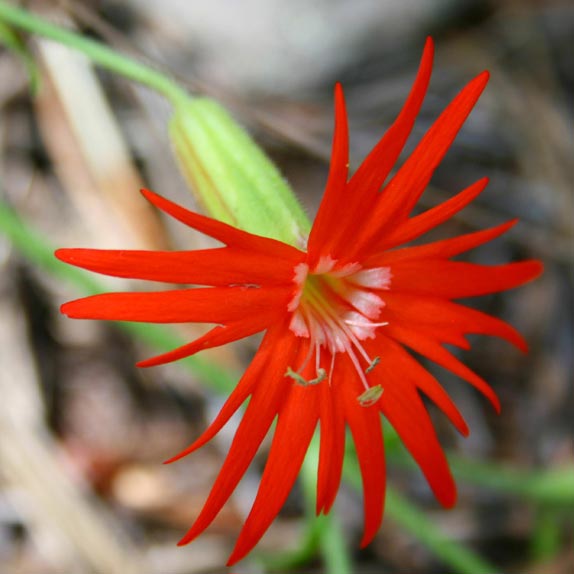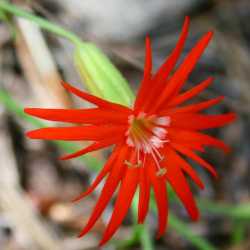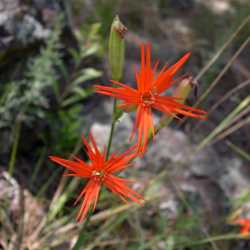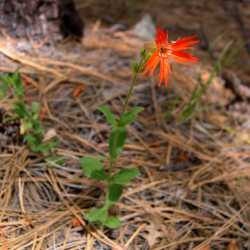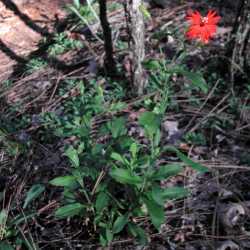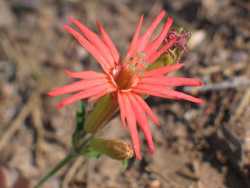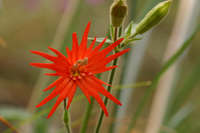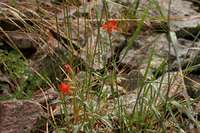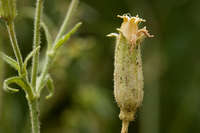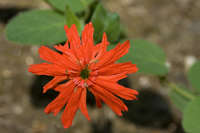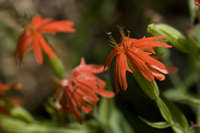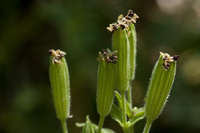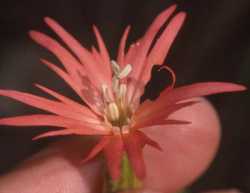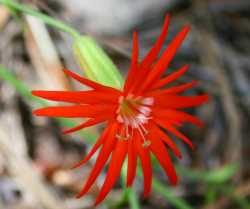Plants perennial; taproot thick, fleshy; caudex branched. Stems 1-several, straggling to erect, sometimes decumbent at base, simple or much-branched distally, 20-120 cm, puberulent or scabrous-pubescent, sometimes retrorse, often glandular distally, becoming glabrate proximally. Leaves sessile or narrowed at base into pseudopetiole, blade pubescent on both surfaces; proximal with blade lanceolate and oblanceolate, broadest distally or distal often reduced, cauline longest near mid stem, blade linear to lanceolate or elliptic, 1.5-10 cm × 2-30 mm. Inflorescences from 1-flowered to simple dichotomy to compound and 3-5-many-flowered with elongate branches; bracts small, linear-lanceolate, or resembling leaves. Pedicels elongate, much exceeding calyx. Flowers: calyx green, 10-veined, broadly tubular, 12-25 × 4-8 mm in flower, narrower towards base, middle broadening to 6-13 mm in fruit, narrower at both ends, pubescent, glandular, lobes lanceolate, 2.5-5 mm, margins membranous or not, apex ± obtuse; corolla scarlet, clawed, claw equaling or longer than calyx, limb lobed, often deeply so, lobes 4-6, linear, lanceolate, or oblong, small lateral teeth may be present, 6-15 mm, appendages inconspicuous, 1-2 mm, dentate; stamens longer than corolla claw but shorter than lobes; stigmas 3, equaling corolla. Capsules oblong to ovoid or broadly tubular, equaling calyx, opening by 6 ascending teeth; carpophore 2-4 mm. Seeds reddish brown, broadly reniform, 1.7-2.3 mm, sides tuberculate, margins papillate.
The large, beautiful scarlet flowers of Silene laciniata are bird- and butterfly-pollinated. The species occurs in three forms. Subspecies laciniata has narrow leaves, much-branched and many-flowered, open inflorescences, and oblong capsules. Subspecies californica has ovate to lanceolate leaves, few-flowered inflorescences, and ovoid capsules. These two entities both occur in California and Mexico. Although they are usually distinguishable, apparent intermediates occur. The third entity is subsp. greggii, which occurs in Arizona, southwestern Texas, and Mexico. It combines characters of the other two subspecies, having broader leaves, a branched and many-flowered open inflorescence, and a capsule of intermediate shape.
Duration: Perennial
Nativity: Native
Lifeform: Forb/Herb
General: Perennial with erect 1-several stems 20-120 cm tall, forming a thick, fleshy taproot, densely puberulent throughout, glandular-pubescent above.
Leaves: Opposite, linear to lanceolate or elliptic, 5-10 cm long, 2-14 mm wide, sessile, but with narrow base, reduced upward, lower sometimes withering.
Flowers: From 1-flowered to simple dichotomy to compound and 3-5 flowered with elongate branches; small bracts linear-lanceolate and resembling leaves; elongate pedicels exceeding calyx; calyx green, 10-veined, broadly tubular, 12-25 mm by 4-8 mm in flower, narrower towards base, middle broadens to 6-13 mm in fruit, narrower at both ends, pubescent, lobes lanceolate 2.5-5 mm, margins membranous or not, corolla scarlet, clawed, lobed limb, often deeply so, 4-6 lobes, linear, lanceolate or oblong; stamens longer than corolla claw, shorter than lobes; 3 stigmas equaling corolla.
Fruits: Oblong to ovoid or broadly tubular capsule equaling calyx, opens by 6 ascending teeth.
Ecology: Found in dry oak, pine, and juniper woodlands from 5,500-10,000 ft (1676-3048 m); flowers July-October.
Notes: Ours is subsp. greggii which can be told apart by the distal leaf blades being lanceolate to elliptic, while the proximal leaf blades are oblanceolate and often broadly so.
Ethnobotany: Used on ant bites and as a reducing medicine.
Etymology: Silene comes from Greek sialon, saliva, which refers to the glandular secretions of the species, or it comes from the mythical Silenus, the intoxicated father of Baccus, god of wine, while laciniata means torn or deeply cut, referring to the fringed petals.
Synonyms: None
Editor: SBuckley, 2010


